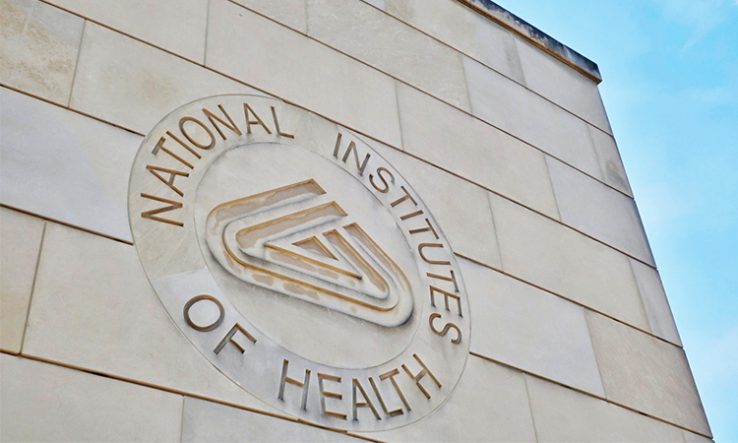
Image: WDCPhotographer, via Shutterstock
Conquering the NIH grants process requires solid preparation
The National Institutes of Health in the United States is one of research funding’s behemoths. In 2019, it handed out $29.5 billion (£22.4bn) in grants to more than 2,700 research organisations. The deep pockets of the NIH draw attention from researchers around the world and competition for funding is tough—success rates for project grants have been around 20 per cent in recent years.
While most NIH awards are only open to US researchers, between 500 and 600 grants were awarded to non-US research organisations each year from 2018 to 2020. And an increasing number of awards are being made to collaborations between US and international researchers, rising from just shy of 7,000 in 2018 to well over 8,000 in 2020.
At a virtual seminar on 27 October, Michelle Hamlet from the NIH’s National Institute of Nursing Research and Emily Linde from the NIH’s National Institute of Allergy and Infectious Diseases shared the essentials on approaching the funder.
Choose wisely
The discussion started around identifying the most suitable NIH funding opportunities. This can be tricky, the pair said, as the NIH has 27 separate institutes and centres covering different fields. But the NIH RePORTER site can be a useful tool, Hamlet said. “It can help you find, for example, which institutes are funding what, what topics they are funding and who is being funded for particular research in a given area.”
Linde suggested that if you cannot find a funding opportunity announcement that fits exactly, you should have a look at “parent announcements”, which provide funding for investigator-initiated applications across broad subject areas. However, it is still important to make sure your application is directly relevant to the mission of whichever institute or centre would fund the grant, she said.
Get in touch
Both Linde and Hamlet urged researchers who were unsure of whether a project idea might be appropriate for a scheme to contact NIH programme officers. “Do I absolutely have to contact the NIH before applying? I would say it’s always advisable to do so, especially from a scientific point of view,” Linde said. In some cases, researchers are required to get in touch, she pointed out, such as when budgets are greater than $500,000 or when letters of intent are requested.
Hamlet said it was particularly helpful if applicants sent programme officers a document with specific aims for their proposal. From this, she said, applicants could be given “a sense of whether or not your project would be a priority for the institute”.
Following the application instructions is “incredibly important”, Hamlet stressed. “You don’t want your application withdrawn because there was an instruction that was missed.”
Build your bid
Once researchers have decided to bid, the page for specific aims at the top of the application is job number one, Hamlet said. “This is what grabs the reader’s attention, hopefully immediately—it’s a roadmap to your application.”
Overall, proposals should aim to be realistic and not overambitious, and should cover potential problem areas and their solutions, she said. “Another really important tip is being explicit,” Hamlet continued. “You can’t expect reviewers to read between the lines and you can’t assume that they know that you know what you intend to do.”
This holds true when discussing outputs, too. “Tell the reviewers what the results will mean—we do not have degrees in divination, so being explicit is very important,” Hamlet emphasised. “The onus is on you as the applicant to determine what makes your project rise above the others that merit funding.”
Applications will be judged on fairly universal funding criteria including significance, novelty and track record, but NIH reviewers are likely to keep two questions in mind when looking at your proposal: Should you do it? And can you do it? Therefore, “it’s helpful to have those two questions in mind when you’re formulating your application”.
Outside source
Applicants from outside the US will have additional concerns, not least double-checking whether they are eligible to apply. Another thing non-US applicants should bear in mind, Linde said, is that since the NIH is funded by the taxpayer, it is primarily concerned with supporting US health research and the health of the US population.
Non-US research funded by the NIH needs to offer something special, such as “different talents in the researcher pool, resources or maybe unique populations that will help us understand a scientific problem better”, Linde said, adding that this must be highlighted in non-US applications. “What do you have that’s a special and unique thing that makes you competitive?”
Finally, if you are not successful, Hamlet advised taking a close look at your reviewer comments to see whether it’s worth tweaking your proposal and reapplying. She stressed paying attention to the score given for significance: “If the significance is high but the approach is weak, there might be a good opportunity to revise and resubmit. Try again—you’re not alone in this process.”
This is an extract from an article in Research Professional’s Funding Insight service. To subscribe contact sales@researchresearch.com